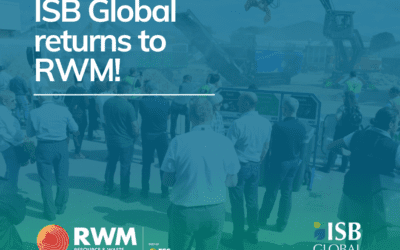How do ever-expanding cities and urban areas handle waste management? The rise of ‘smart cities’ could provide a role model for urban waste management around the world.
What is a smart city?
Since the industrial revolution, people have been working out the best way to manage areas where lots of people live. The infrastructure required to manage the day-to-day needs and demands of a growing population is considerable and requires careful and thoughtful planning and operation. From power to sewage, these critical areas are what helps a city to flourish.
Smart cities are the next evolution of city management. They use a range of technologies and innovations to improve services, add new facilities, connect populations and drive more sustainable choices. The World Economic Forum says that these technologies include the Internet of Things, mobile solutions, big data, artificial intelligence and blockchain.
Bringing these technologies together to develop innovative solutions that engage with people, give them more control and improve the lived-in environment is a significant trend in cities around the world.
What benefits does a smart city bring?
In theory, a smart city brings a wide range of benefits. You’ve probably used smart city technology without really registering that’s what it is. For example, buying a train ticket on your phone and scanning the code to get through the ticket gates is smart city technology.
Living in an area where the streetlights dim or go off during the middle of the night is smart city technology. Registering your car for a low emissions zone so that you can be charged directly, is smart city technology.
The benefits of these types of solutions include:
- Better engagement between people and city authorities.
- Easier access to services, including payments.
- More sustainable initiatives.
- Better digital access.
- Safer neighbourhoods.
- Better decision making, based on accurate data.
Of course, creating a smart city takes time, and a focus on digitising the things that matter most to people. After all, smart cities are about engaging with residents, so leaders must take the time to understand what’s important to people and how they can use technology to make a difference in the right areas.
Smart cities in practice
Earlier this year, earth.org published a list of the top 7 smart cities around the world. It says:
“The United Nations predicts that 70% of the world’s population will be living in cities and urban areas by 2050. Smart cities around the world have made huge strides in their smart city initiatives and in adopting smart city technologies as a way to make their home cities more sustainable and energy efficient as well as minimising carbon emissions.”
The report identifies Singapore as the top smart city. Here, contactless payment is the preferred way of getting around the city’s transport system. The city has also introduced wearable technology to help monitor health, with a digital health system where video consultations are the norm. It’s also planning an eco-city, which will be completely vehicle free.
Similarly, cities like Seoul, Zurich and Helsinki are using big data and innovative technologies to support senior citizens who live alone, a smart building management system and reducing traffic emissions.
What solutions are being used for smart waste management?
The more people that live in a city, the more waste is produced. Although there are many initiatives to help reduce waste, encourage reuse and promote a circular economy, there’s no getting away from the fact that the amount of waste is likely to increase.
There’s a lot of work going on in the area of smart waste management – ISB Global is a leading light in this area. Research in this area looks at how the socio-economic and climate-related changes over the next decade or more are going to impact our ability to deal with waste sustainably.
Waste collection and disposal is a fundamental part of keeping any city running smoothly. The challenge for waste and recycling planners and operators is to see how to support a city’s businesses and residents to reduce and manage their waste, while also using technology to more effectively collect, sort, sell and dispose of it.
Currently, most smart waste management solutions are driven by the Internet of Things and related technology. This is essentially sensor-driven data gathering to help both waste management companies and customers more accurately plan, collect, sort and recycle waste.
Sensors on domestic bins, for example, can weigh waste so that customers can be charged individually for the waste they produce (PAYT)– the more waste, the higher the cost. This could be offset by recycling or reusing, putting the consumer in more control of their waste approach.
Not only that – bin sensors can also relay information about when the bin is full. So, collection rounds can be better planned, bins can be sized correctly, and collection frequencies fine-tuned.
Similarly, using data analysis to understand essential waste management functions like route planning can make a significant difference to the amount of fuel used and the overall efficiency of the vehicle. These efficiencies can reduce carbon emissions, produce more reliable collection routes and allow waste management companies to expand their range of services.
These technologies are already in play in several cities around the world, including Seoul, San Francisco and Amsterdam. As city authorities look for smarter ways to manage traditional infrastructure, keep an eye out for a smart waste management solution coming to your city soon.






